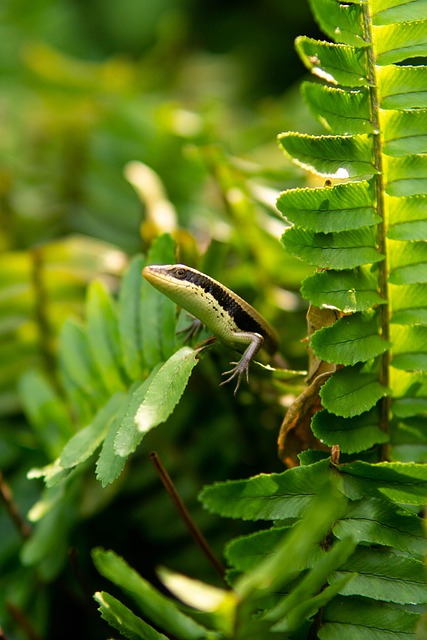Termite inspections are crucial for identifying infestations early, preventing structural damage, and balancing property protection with ecological preservation. While traditional chemical methods have drawbacks, eco-friendly alternatives like natural repellents (e.g., neem oil, lemongrass), biological control (beneficial insects), and non-invasive treatments gain popularity. Regular inspections using advanced technology, combined with sustainable practices, minimize environmental impact while effectively managing termite threats. Government support and community education further promote these eco-conscious methods for a healthier future.
In today’s eco-conscious world, addressing termite damage while minimizing environmental impact is paramount. This article explores comprehensive solutions for eco-friendly termite control, delving into key aspects like understanding termite behavior and its ecological consequences. We examine the importance of regular termite inspections as a proactive measure, highlighting the need to balance traditional methods’ effectiveness with potential hazards. Discover natural repellents, green practices, and successful case studies, empowering you with knowledge for sustainable termite management.
Understanding Termite Damage and Its Environmental Impact

Termites are silent destroyers that can cause significant structural damage to homes and buildings. When left undetected, these insects can eat away at wooden components, leading to costly repairs or even complete structure failure. A termite inspection is an essential step in understanding and mitigating this potential risk. During a thorough inspection, professionals identify active termite infestations, assess the extent of damage, and pinpoint areas of vulnerability.
Beyond the immediate structural concerns, termites also have a substantial environmental impact. They play a role in ecosystem balance by breaking down dead wood and other plant materials, contributing to nutrient cycling. However, their destructive nature raises environmental worries when they invade natural habitats, particularly in diverse ecosystems. Termite control, therefore, requires a delicate balance between protecting properties and preserving the environment, with eco-friendly methods becoming increasingly popular for both effective and sustainable termite management.
The Importance of Regular Termite Inspections

Regular termite inspections are an essential part of eco-friendly termite control. These meticulous checks, often recommended by pest control experts, play a pivotal role in identifying potential termite infestations early on. By conducting thorough termite inspections at regular intervals, homeowners and property managers can stay ahead of these relentless pests. Early detection is crucial because it allows for swift action, limiting the extent of damage caused by termites to structures and reducing the need for more invasive and environmentally harmful control methods.
Such inspections not only help in preventing significant structural damage but also contribute to sustainable practices. By adopting proactive measures through regular termite inspections, individuals can avoid the use of toxic chemicals and opt for eco-friendly solutions, ensuring a healthier environment for both people and wildlife surrounding the property.
Traditional Termite Control Methods: Pros and Cons

Traditional termite control methods often involve chemical pesticides, which can be effective but come with drawbacks. These chemicals are potent and can pose significant risks to the environment, including water contamination and harm to non-target species, such as beneficial insects and nearby wildlife habitats. Termite inspections are crucial in identifying areas at risk, but these methods rely heavily on synthetic substances that may require frequent reapplication.
Additionally, traditional techniques don’t address the underlying causes of termite infestations, like wood sources and moisture issues. This can lead to repeated treatments and ongoing problems, especially if structural modifications aren’t made to eliminate access points for termites. Furthermore, chemical treatments might not be suitable for areas with strict environmental regulations or for homeowners seeking more natural solutions.
Eco-Friendly Alternatives to Chemical Termite Treatments

When it comes to protecting your home from termites, there’s a growing trend towards eco-friendly solutions that avoid harsh chemicals. One alternative gaining popularity is the use of natural repellents like essential oils and plant extracts. These substances can deter termites due to their strong scents, which the pests find unpleasant. For instance, lemon, neem oil, and pyrethrum are known to be effective in repelling termites during a termite inspection.
Another non-chemical approach is biological control, where beneficial insects or microorganisms are introduced to the affected area. These ‘good’ bugs prey on or compete with the termite population, helping to reduce their numbers over time. This method not only minimizes environmental impact but also promotes a balanced ecosystem around your property, making it a safer and more sustainable option for both you and the planet during termite inspections.
Natural Repellents and Their Efficacy Against Termites

Termites are a common pest that can cause significant damage to homes and structures, making termite inspection a crucial step in maintaining property integrity. While traditional control methods involve chemical treatments, there’s a growing interest in eco-friendly alternatives, especially natural repellents. These natural solutions offer a safer and more sustainable approach to managing termites without harming the environment or indoor air quality.
Plants, essential oils, and certain spices are known termite repellents due to their strong scents that termites find unpleasant. For instance, lemongrass, neem oil, and cinnamon have been shown to deter termites when applied correctly during a termite inspection. These natural repellents can be integrated into a comprehensive pest management strategy, reducing the reliance on synthetic chemicals. However, it’s important to note that their effectiveness may vary based on the species of termites and environmental factors, thus highlighting the need for tailored solutions during inspections.
Integrating Green Practices in Termite Prevention Strategies

Incorporating green practices into termite control measures is a growing trend in the industry, as environmentally conscious individuals and businesses seek sustainable solutions for pest management. Termite prevention strategies that align with eco-friendly principles offer a win-win scenario—not only do they protect structures from these relentless insects but also minimize the negative impact on local ecosystems. One of the initial steps in this approach is regular termite inspections. By scheduling periodic assessments, homeowners and property managers can identify potential entry points and signs of infestation early on, thus enabling prompt action without resorting to harmful chemicals.
These inspections should be comprehensive, involving trained professionals who utilize non-invasive techniques and natural termiticides when necessary. The goal is to maintain a balance between effective termite control and preserving the environment. By integrating green practices, such as regular monitoring, organic prevention methods, and targeted treatments, it’s possible to manage termite populations while safeguarding the health of nearby plants, animals, and soil organisms, ensuring a more sustainable future for all.
Case Studies: Successful Eco-Friendly Termite Management

Successful eco-friendly termite management has been achieved in various regions, showcasing the effectiveness of alternative control methods. One notable case study involves a suburban community facing severe termite infestation. Local authorities and environmental groups collaborated to implement an integrated pest management strategy that focused on prevention and early detection. Regular termite inspections became a cornerstone of this approach. Trained professionals conducted thorough assessments, utilizing advanced technology like termiticides with reduced environmental impact and heat treatment for targeted applications.
As a result, the community experienced a significant decrease in termite damage to homes. This success story demonstrates that combining traditional inspection practices with modern eco-conscious treatments can lead to substantial improvements in termite control while minimizing potential hazards to local ecosystems.
Community and Government Initiatives for Sustainable Pest Control

In many communities, government bodies and local authorities are increasingly promoting sustainable pest control methods, including eco-friendly termite inspections and treatments. This shift towards greener practices is driven by the need to protect both the environment and public health. Termite control services are now incorporating natural solutions, such as using beneficial insects like nematodes to target termites or implementing organic repellents derived from plants, reducing the reliance on toxic chemicals.
These initiatives often involve community education programs that teach residents about preventive measures, regular termite inspections, and the importance of early detection. By fostering a collaborative approach, communities can effectively manage termite infestations while minimizing ecological impact. Government regulations and incentives also play a crucial role in encouraging businesses to adopt eco-conscious practices, ensuring a more sustainable future for all.
Future Trends in Eco-Conscious Termite Control

As the world shifts towards sustainability, future trends in eco-conscious termite control will likely focus on innovative, non-toxic methods that minimize environmental impact. One promising area is the increased use of natural predators like certain fungi and nematodes to target termites. These biological agents offer a safe and effective alternative to chemical treatments, reducing potential harm to non-target organisms and the ecosystem as a whole.
Another emerging trend is the integration of technology in termite inspection and monitoring. Advanced sensors and remote sensing techniques can detect subtle signs of termite activity earlier, allowing for more precise and targeted interventions. Additionally, smart termitides management systems that utilize data analytics could become commonplace, enabling proactive measures based on real-time information, further enhancing the effectiveness of eco-friendly control methods.
